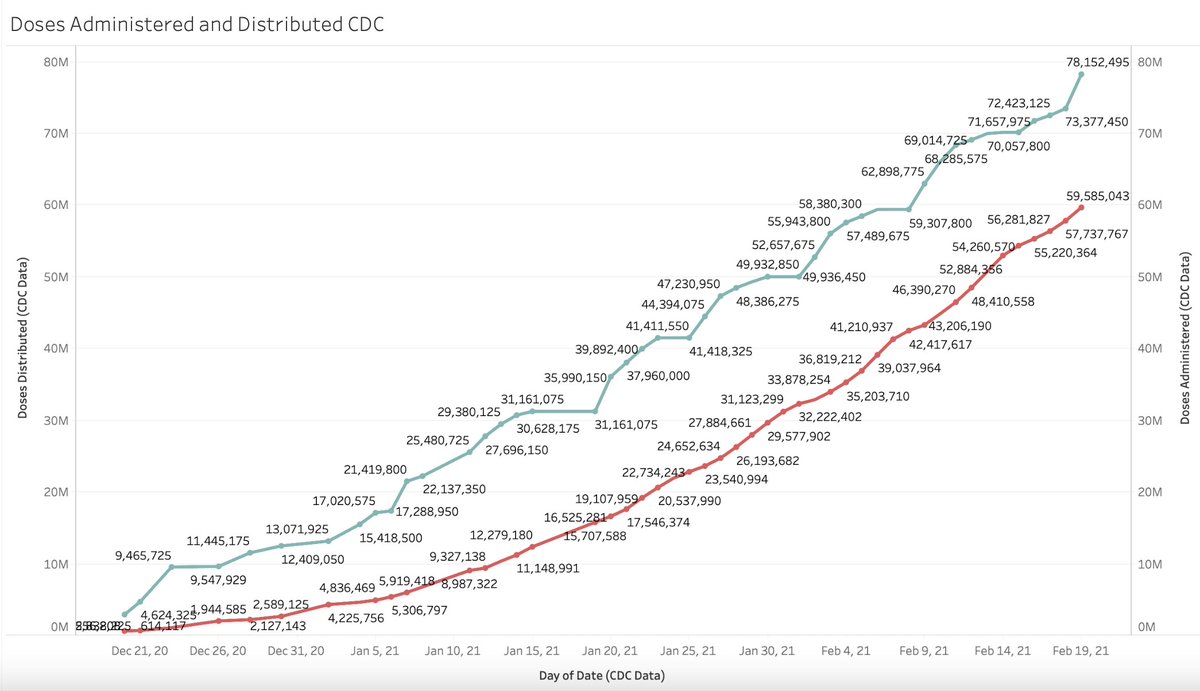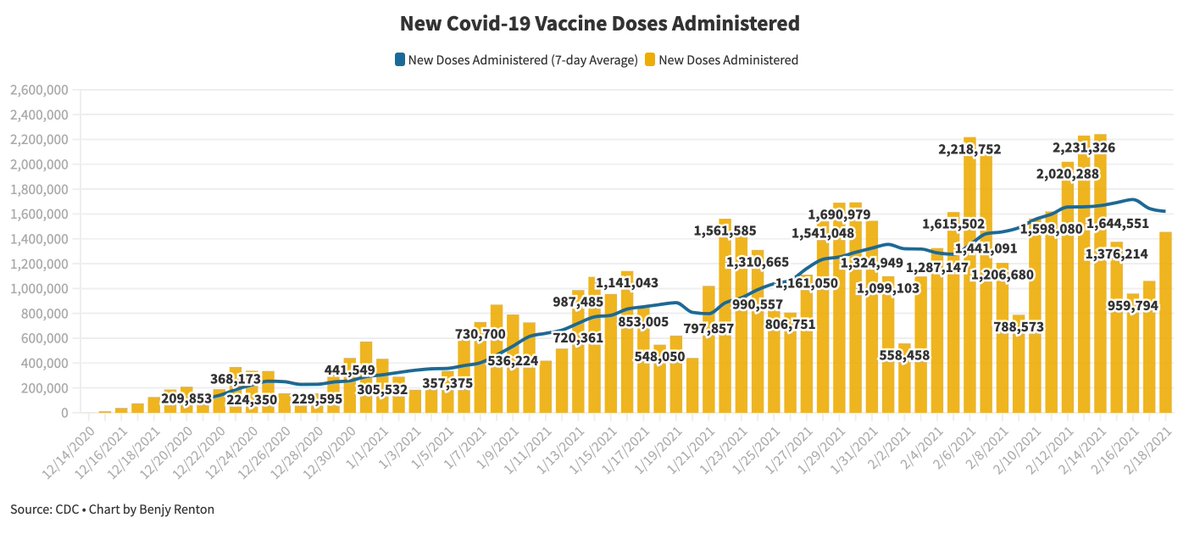
Earlier this week, Alaska made vaccines available to those 16 and older, becoming the first state to remove eligibility requirements. It leads the nation with 17% of its population fully vaccinated. So what can we learn? And what is it sometimes hard to compare states? A thread: 

While Alaska is the first state to remove eligibility requirements, effective immediately, other states are expected to do the same in the coming weeks, and certainly before President Biden's deadline on May 1. We will continue to track these.
washingtonpost.com/health/2021/03…
washingtonpost.com/health/2021/03…
Vaccination plans are complex and in order to make comparisons among states with metrics such as doses per capita and percentage of the population vaccinated, we must consider:
- Supply
- Delivery
- Uptake
- Population characteristics
Let's analyze Alaska with these factors.
- Supply
- Delivery
- Uptake
- Population characteristics
Let's analyze Alaska with these factors.
First, supply. As @scottieandrew reports, to help make vaccines more cost-efficient, Alaska receives its doses in a big batch monthly. This helps the state plan ahead. Additionally, AK benefits from extra allocations through the Indian Health Service.
cnn.com/2021/03/09/us/…
cnn.com/2021/03/09/us/…
Next, delivery. As @ChelseaCirruzzo reports, Alaska has relied on existing community networks for delivery and uses a hub-and-spoke model from previous vaccination programs. Equity is taken into account and the state uses a wide variety of transportation.
usnews.com/news/best-stat…
usnews.com/news/best-stat…
Next, uptake. Alaska, like many other states, prioritized the 65+ population. While vaccination rates have been high in this group (more on this in a bit), a recent Census Bureau survey shows Alaska having one of the lowest rates of vaccine enthusiasm. 

The federal governments allocates doses to states based on its total population, not the population in each "phase." Let's compare Alaska to Vermont. Both have opened vaccines to those over 65, however Vermont has a much older population. 

This means that it may take longer (and more doses) for Vermont to move through its 65+ phase than Alaska. Additionally, preliminary data from both states show a higher level of vaccine uptake in the 70+ age group in Vermont compared to Alaska. 

These population characteristics are important to understand — as supply ramps up, it is very likely some states will move "faster" through phases than others — likely due to policy decisions, uptake and efficiency. Every plan is different.
nytimes.com/interactive/20…
nytimes.com/interactive/20…
Over the coming weeks, we need to focus on vaccine delivery channels and ensure that residents in each state have equitable access. As @RWeintraubMD has said, vaccination plans must take into account a combination of speed, scale and equity.
It is for these reasons that it is often difficult to make an apples to apples comparison among states, but we have much to learn from each states' nuanced strategies and best practices. We need to watch the pace of vaccination and make adjustments to serve hard-hit populations. 

By May 1, every American will be eligible to register for the vaccine. In the meantime, we must be patient and show our respect for public health officials in each state, who have all been working incredibly hard on distribution plans.
https://twitter.com/bhrenton/status/1369482475873927169
Special thanks to @annezinkmd for her incredible work and transparency with Alaska's Covid-19 response, and our great team here in Vermont.
• • •
Missing some Tweet in this thread? You can try to
force a refresh












